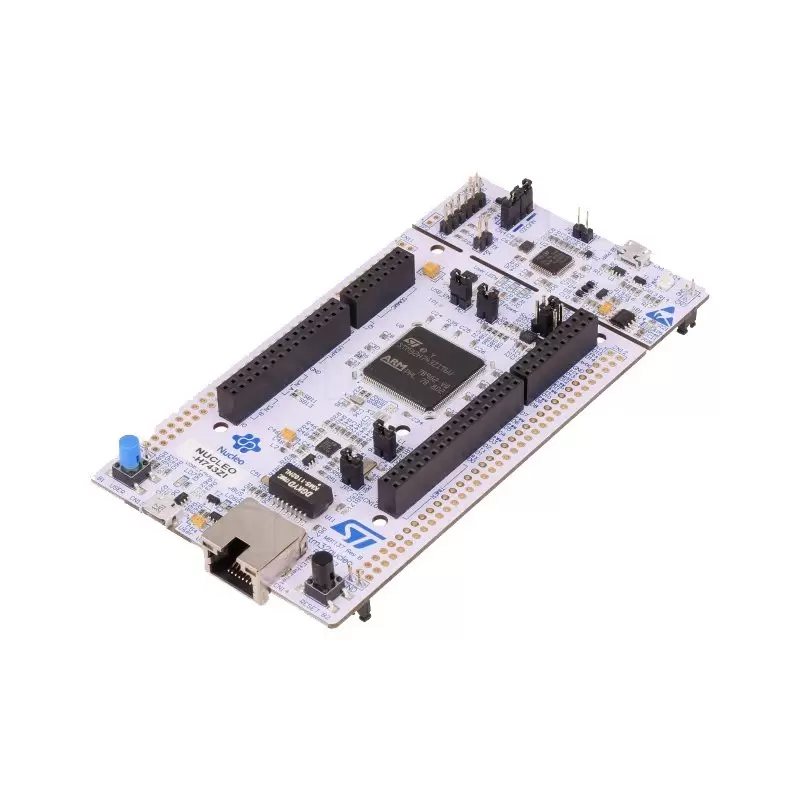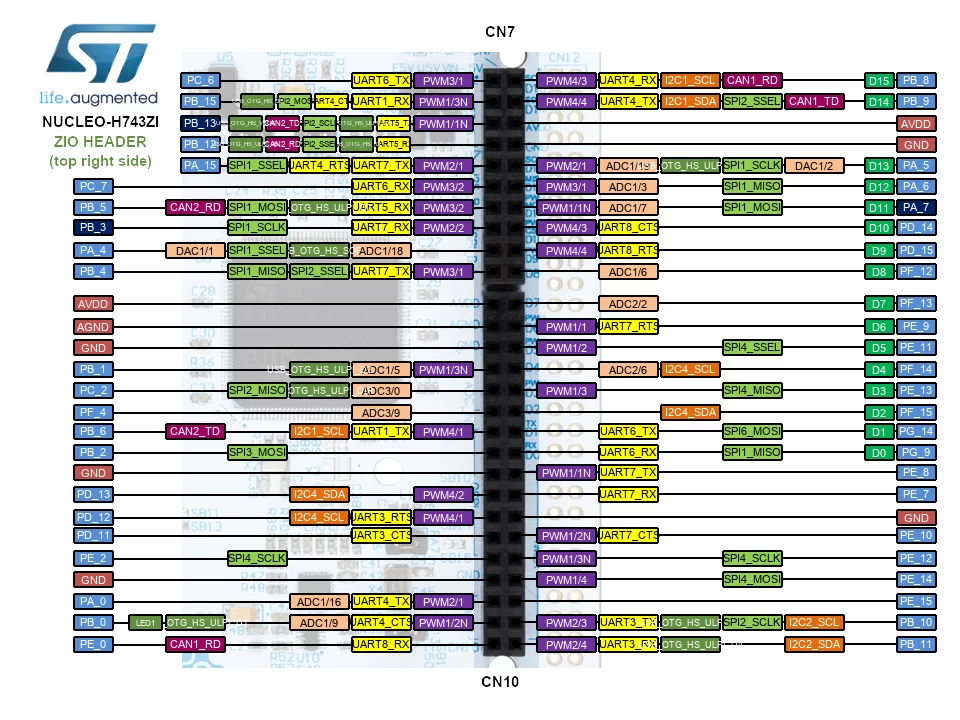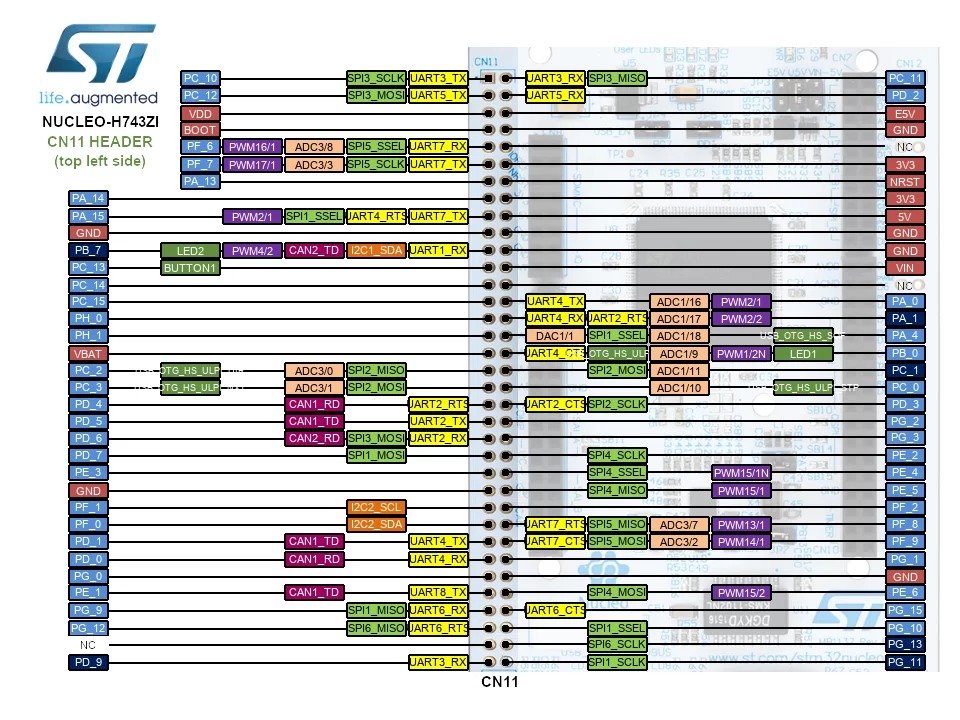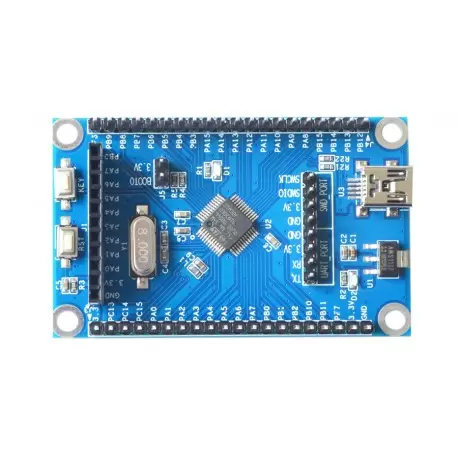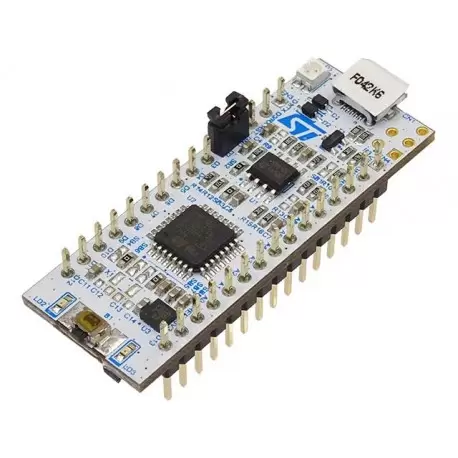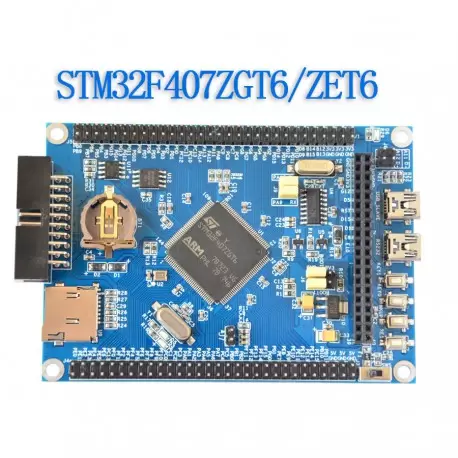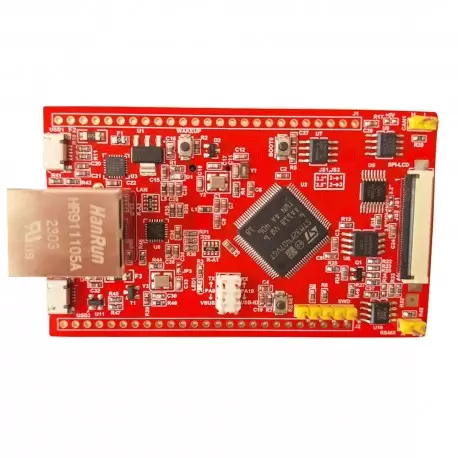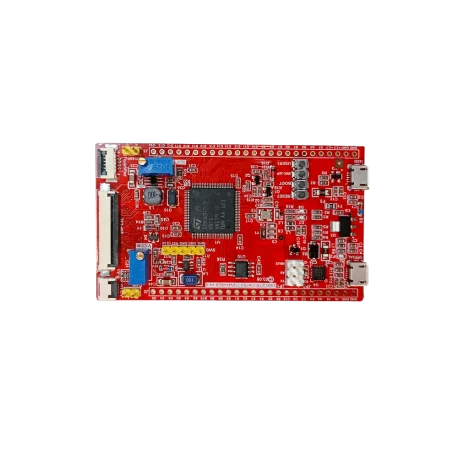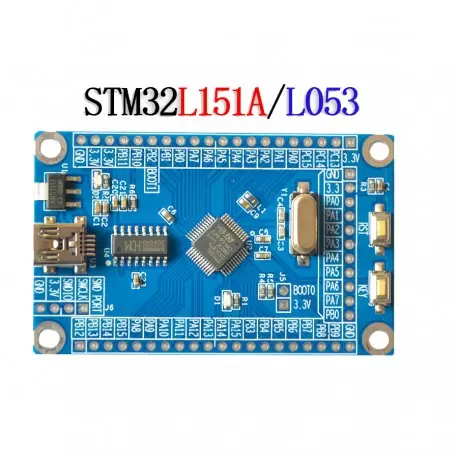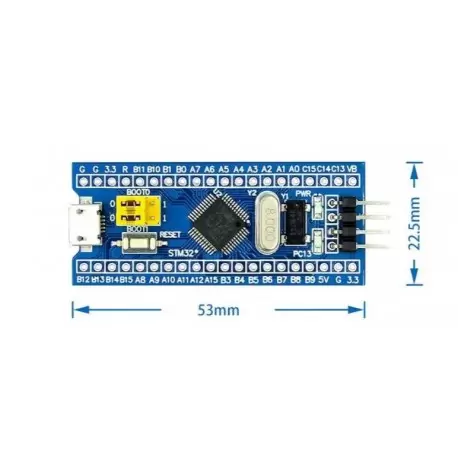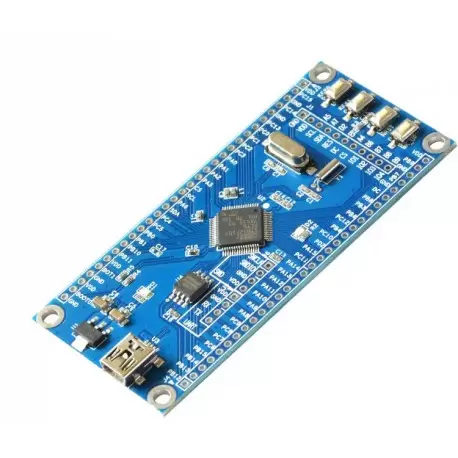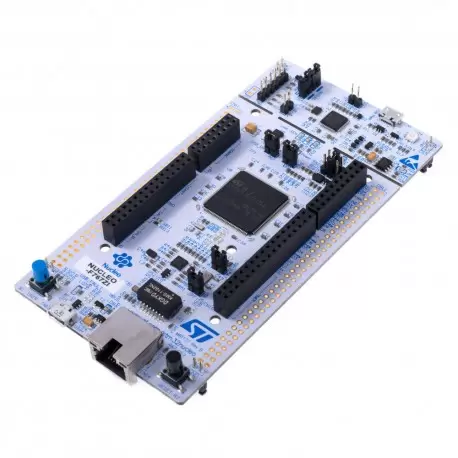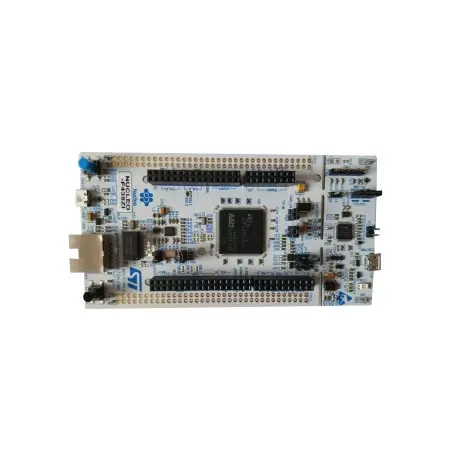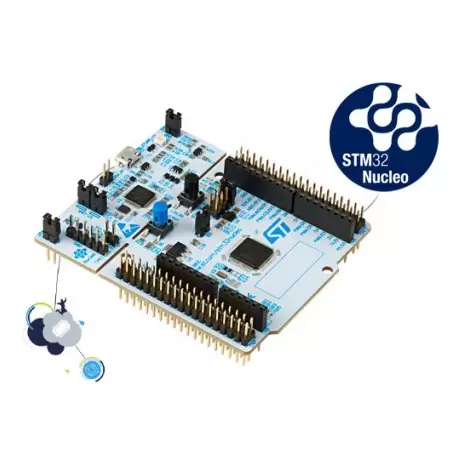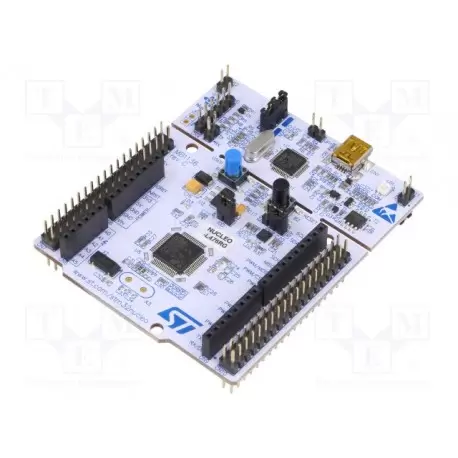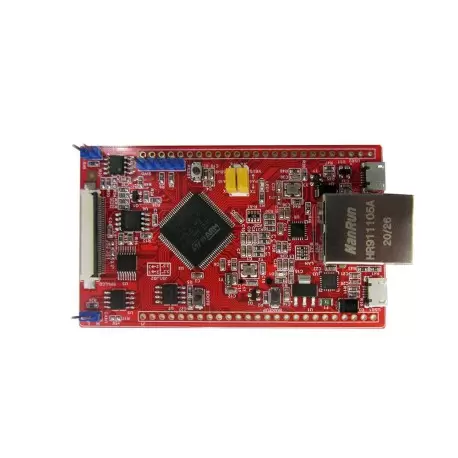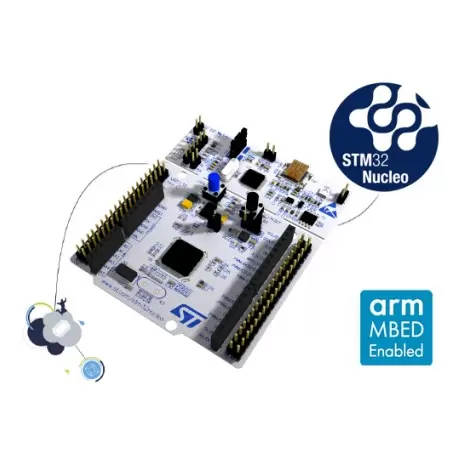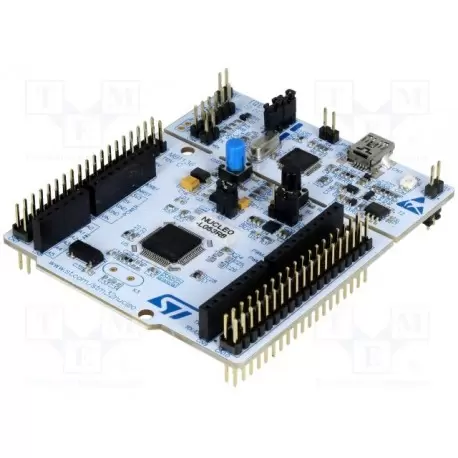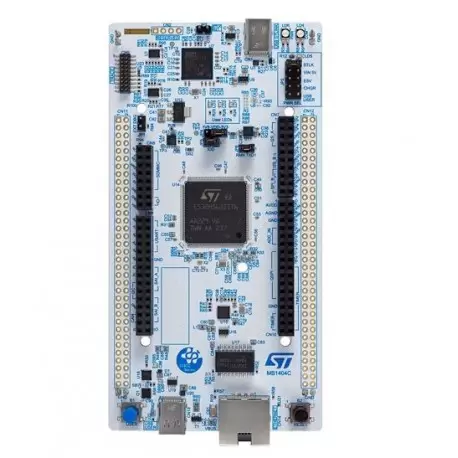برد NUCLEO-H743ZI2
برد NUCLEO-H743ZI2
NUCLEO-H743ZI- Development Boards & Kits - ARM STM32 Nucleo-144 development board with STM32H743ZI MCU, supports Arduino, ST Zio and morpho connectivity
Manufacturer:
STMicroelectronics
Product Category:
Development Boards & Kits - ARM
Series:
NUCLEO-H743ZI
Product:
Development Boards
Core:
ARM Cortex M7
Tool Is For Evaluation Of:
STM32H743ZI
Brand:
STMicroelectronics
Interface Type:
Ethernet, USB
Data Bus Width:
32 bit
Product Type:
Development Boards & Kits - ARM
Subcategory:
Development Tools
Tradename:
NUCLEO
STM32 Nucleo-144 development board with STM32H743ZIT6 MCU, supports Arduino, ST Zio and morpho connectivity
Overview:
The STM32 Nucleo-144 board provides an affordable and flexible way for users to try out new concepts and build prototypes with the STM32 microcontroller, choosing from the various combinations of performance, power consumption and features. The ST Zio connector, which is an extension of Arduino™ Uno, provides access to more peripherals and ST morpho headers make it easy to expand the functionality of the Nucleo open development platform with a wide choice of specialized shields. The STM32 Nucleo-144 board does not require any separate probe, as it integrates the ST-LINK/V2-1 debugger/programmer and it comes with the STM32 comprehensive software HAL library, together with various packaged software examples, as well as a direct access to the ARM®mbed™online resources.
Microcontroller key features:
Core
32-bit Arm® Cortex®-M7 core with double-precision FPU and L1 cache:
16 Kbytes of data and 16 Kbytes of instruction cache
Frequency up to 400 MHz
MPU
856 DMIPS/ 2.14 DMIPS/MHz (Dhrystone 2.1)
DSP instructions
Memories
Up to 2 Mbytes of Flash memory with read-while-write support
1 Mbyte of RAM: 192 Kbytes of TCM RAM (inc. 64 Kbytes of ITCM RAM + 128 Kbytes of DTCM RAM for time critical routines), 864 Kbytes of user SRAM, and 4 Kbytes of SRAM in Backup domain
Dual mode Quad-SPI memory interface running up to 133 MHz
Flexible external memory controller with up to 32-bit data bus: SRAM, PSRAM, SDRAM/LPSDR SDRAM, NOR/NAND Flash memory clocked up to 133 MHz in Synchronous mode
CRC calculation unit
Security
ROP, PC-ROP, active tamper
General-purpose input/outputs
Up to 168 I/O ports with interrupt capability
Reset and power management
3 separate power domains which can be independently clock-gated or switched off:
D1: high-performance capabilities
D2: communication peripherals and timers
D3: reset/clock control/power management
1.62 to 3.6 V application supply and I/Os
POR, PDR, PVD and BOR
Dedicated USB power embedding a 3.3 V internal regulator to supply the internal PHYs
Embedded regulator (LDO) with configurable scalable output to supply the digital circuitry
Voltage scaling in Run and Stop mode (5 configurable ranges)
Backup regulator (0.9 V)
Voltage reference for analog peripheral/VREF+
Low-power modes: Sleep, Stop, Standby and VBAT supporting battery charging
Low-power consumption
Total current consumption down to 4 μA
Clock management
Internal oscillators: 64 MHz HSI, 48 MHz HSI48, 4 MHz CSI, 32 kHz LSI
External oscillators: 4-48 MHz HSE, 32.768 kHz LSE
3× PLLs (1 for the system clock, 2 for kernel clocks) with Fractional mode
Interconnect matrix
4 DMA controllers to unload the CPU
1× high-speed master direct memory access controller (MDMA) with linked list support
2× dual-port DMAs with FIFO
1× basic DMA with request router capabilities
Up to 35 communication peripherals
4× I2Cs FM+ interfaces (SMBus/PMBus)
4× USARTs/4x UARTs (ISO7816 interface, LIN, IrDA, up to 12.5 Mbit/s) and 1x LPUART
6× SPIs, 3 with muxed duplex I2S audio class accuracy via internal audio PLL or external clock, 1x I2S in LP domain (up to 133 MHz)
4x SAIs (serial audio interface)
SPDIFRX interface
SWPMI single-wire protocol master I/F
MDIO Slave interface
2× SD/SDIO/MMC interfaces (up to 125 MHz)
2× CAN controllers: 2 with CAN FD, 1 with time-triggered CAN (TT-CAN)
2× USB OTG interfaces (1FS, 1HS/FS) crystal-less solution with LPM and BCD
Ethernet MAC interface with DMA controller
HDMI-CEC
8- to 14-bit camera interface (up to 80 MHz)
11 analog peripherals
3× ADCs with 16-bit max. resolution (up to 36 channels, 4.5 MSPS at 12 bits)
1× temperature sensor
2× 12-bit D/A converters (1 MHz)
2× ultra-low-power comparators
2× operational amplifiers (8 MHz bandwidth)
1× digital filters for sigma delta modulator (DFSDM) with 8 channels/4 filters
Graphics
LCD-TFT controller up to XGA resolution
Chrom-ART graphical hardware Accelerator™ (DMA2D) to reduce CPU load
Hardware JPEG Codec
Up to 22 timers and watchdogs
1× high-resolution timer (2.5 ns max resolution)
2× 32-bit timers with up to 4 IC/OC/PWM or pulse counter and quadrature (incremental) encoder input (up to 200 MHz)
2× 16-bit advanced motor control timers (up to 200 MHz)
10× 16-bit general-purpose timers (up to 200 MHz)
5× 16-bit low-power timers (up to 200 MHz)
2× watchdogs (independent and window)
1× SysTick timer
RTC with sub-second accuracy & HW calendar
Debug mode
SWD & JTAG interfaces
4-Kbyte Embedded Trace Buffer
True random number generators (3 oscillators each)
96-bit unique ID
Nucleo board features:
Two types of extension resources
Arduino Uno Revision 3 connectivity
STMicroelectronics Morpho extension pin headers for full access to all STM32 I/Os
On-board ST-LINK/V2-1 debugger/programmer with SWD connector
Selection-mode switch to use the kit as a standalone ST-LINK/V2-1
Flexible board power supply
USB VBUS or external source (3.3 V, 5 V, 7 - 12 V)
Power management access point
Three User LEDs
Two push buttons: USER and RESET
USB re-enumeration capability: three different interfaces supported on USB
Virtual Com port
Mass storage (USB Disk drive) for drag'n'drop programming
Debug port
Ethernet 10/100Mbps
USART

توضیحات بیشتر رو میتوانید از این سایت دریافت کنید.
Board pinout:
Pins Legend
Zio and Arduino-compatible headers:
CN11 CN12 headers:
نقدوبررسی محصول / پرسش و پاسخ
- نقد و بررسی (2)
- پرسشها و پاسخها (2)
- Latest
- Latest
